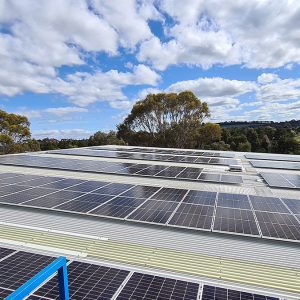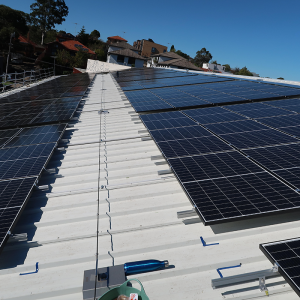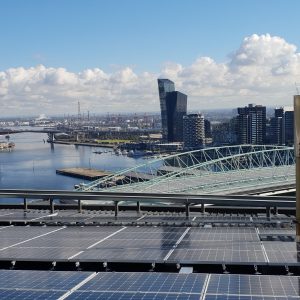The installation of 27kW high rise solar for Port Melbourne Apartments is one of the most high-tech and structurally engineered solar PV systems EnviroGroup has ever completed. With beautiful seaside views, all that was missing from the 12-storey, 50-meter-tall roof space was a sleek and energy saving solar PV system.
High tech, high rise engineering for solar
As the roof is concrete, the system required a penetrative fix – the strong, weather resistant aluminium racking that the solar panels are attached to needed to be chemically fixed 80mm into the concrete. EnviroGroup engaged structural engineers to produce detailed calculations for the foot placement, approved for the wind loading demands of the height of the building and seaside location. The on-site team used Chemset anchors, installed according to the strict structural engineering approval.
Solar on concrete roof
Many installers may say that solar on concrete roofs cannot be done – the high level of engineering and wind loading calculations, risk of water leaks and physical power to drill hundreds of holes for the fixing scare many away. But the team at EnviroGroup have completed multiple penetrative-fix installations on concrete roofs without issue.
Waterproofing solar
EnviroGroup retained a waterproofing specialist to ensure the concrete membrane maintained its integrity following the install, so the building would not face potential water leaks down the road.
The electrical design also demanded special attention to lightning protection. A high-rise building in a storm prone area faces significant danger to electrical infrastructure from lightning if not designed and installed appropriately. EnviroGroup integrated the solar PV array earthing system into the building’s existing lighting protection structure. The addition of AC and DC power surge protection devices ensure that the equipment downstream from the roof will be protected from damage in the event of a lightning strike.
As the Port Melbourne apartment block is classed as a residential property, there were regulatory and safety limitations on the design, requiring the use of an additional inverter. This effectively doubled the amount of cable that needed to be run from the panels to the inverters, but the installation team were able to complete the work in only 15 days.





